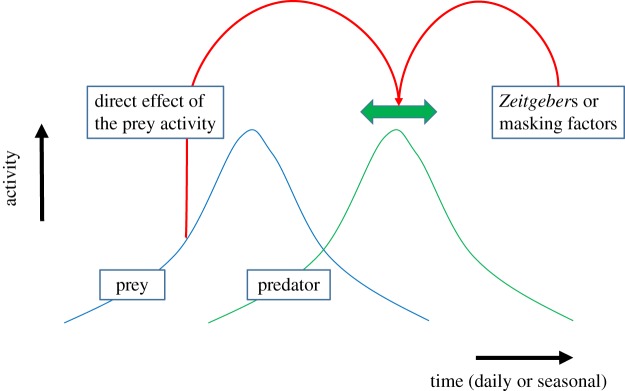Figure 1.
Predator activity patterns over the day or over the year may shift to earlier or later (thick green double-headed arrow) depending on environmental variables that affect the clock (Zeitgebers) or that alter activity patterns without altering the clock (masking factors) (thin red arrow on the right), but may also be affected directly by the activity pattern of their prey (thin red arrow on the left). A key question is whether the activity patterns of the prey directly affect the activity pattern of the predator (as a Zeitgeber or as a masking factor) as this determines the degree to which the two distributions can vary independently, for instance due to climate change or light pollution. Note that the same holds for the prey activity patterns, which may or may not be directly affected by the predator activity pattern. (Online version in colour.)

